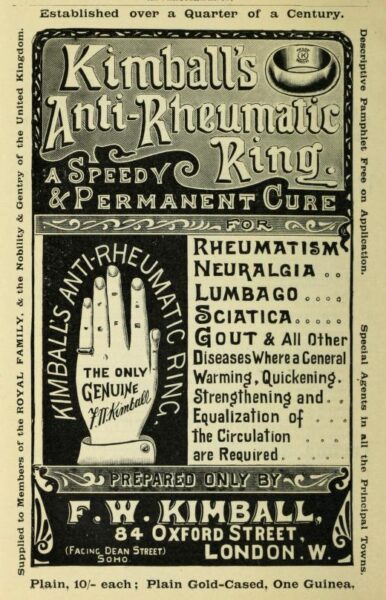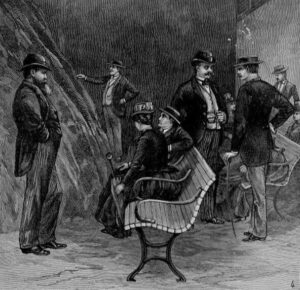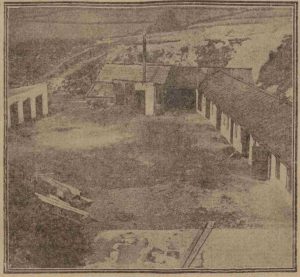Far from being a quack remedy, this device must have been a boon to desperate travellers everywhere.
Surgical instrument maker William Huntly Bailey, whom we have met before, described the problem: If there is any inconvenience in travelling on the railway, it is on account of the few stoppages, and no doubt many persons have dated the breaking up of their health from the want of those conveniences which the travellers had in days gone by.
As well as being useful on journeys, the contraptions were used in medicine for patients not mobile enough to get to a bedpan in time, but even in that context they were still commonly referred to as railway urinals. The bag was made of rubber and contained a valve to prevent fluids escaping.
.
SPARKS AND SON,
INVENTORS OF THE
INDIA-RUBBER URINALS
For MALE and FEMALE RAILWAY TRAVELLERS,
INVALIDS, and CHILDREN.
These Urinals are made on the most approved principles,
and all are fitted with the recently invented valve, which will
not allow any return of the water by the upper part, by being
placed in any position, and from their improved construction
are better than any similar articles at present in use.
A liberal discount to the Medical Profession. Descriptive
Circulars and Lists of Prices sent per post.
Hospitals, Infirmaries, and Unions, supplied on the best
terms, with every article for the use of the sick and invalided.
SPARKS and SON,
Patent Surgical Truss and Bandage Makers,
28 CONDUIT STREET, NEW BOND STREET,
LONDON
Source: The Chemical News, 7 April 1860
.
Railway stations did have basic cast-iron urinals on the platform (see CIBSE’s Heritage website for some examples) but these were a notorious ‘nuisance’ i.e. they stank. They were also unusable by women. Some stations had ladies’ water closets too, but these were often restricted to first-class passengers, and in any case they weren’t a priority because women’s inequality in society extended to a lack of public provision of conveniences. Surely, the logic went, women weren’t away from home that much, so why cater for those who did want to gad about? And yet the situation worked both ways – the lack of public facilities was one factor actively suppressing women’s mobility and involvement in society outside the home. Even an innocent day out shopping was only for those with a pelvic floor of steel.
The picture in Sparks & Son’s ad shows the male version; it’s fairly self-explanatory how it was worn. For women, the railway urinal looked like this:
The strap at the bottom went round the wearer’s leg to keep the bag in place (male ones had the strap too, though it’s not shown in the ad). Here, ladies could claim a small advantage because it was relatively easy to hide the urinal under a crinoline, but although it was supposedly able to be ‘worn with perfect comfort, either day or night, without being perceived by the closest observer,’ it is difficult to believe that a full one would remain unnoticed under a gentleman’s trousers.



This is fascinating – you write about the most amazing things. I always say to myself – I should have wondered about that; and am always glad to have learned something, too.
But anyway…I wonder how many people actually used these. I would find it very hard to waddle around with one of these under my crinoline, even if it was well concealed. I’d be worrying about it – well, spilling. And it would be hard to use, too, possibly.
Thanks, Lidian – I love what you write about too!
It’s difficult to know how much these were used as I had quite a bit of trouble finding out much info on them – I suppose people just didn’t talk about that kind of thing. I would guess it was pretty embarrassing to go and buy one too, especially for women.
They were advertised in the ordinary newspapers as well as the medical press, but the ads didn’t make a big thing of them – they were usually just mentioned in a list of other goods. I suspect that for the reasons you say, they weren’t majorly popular.